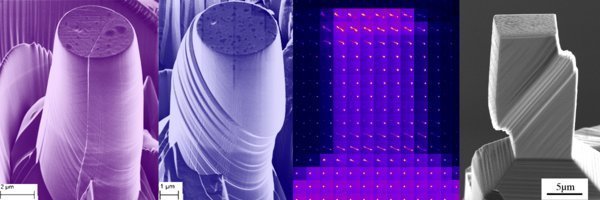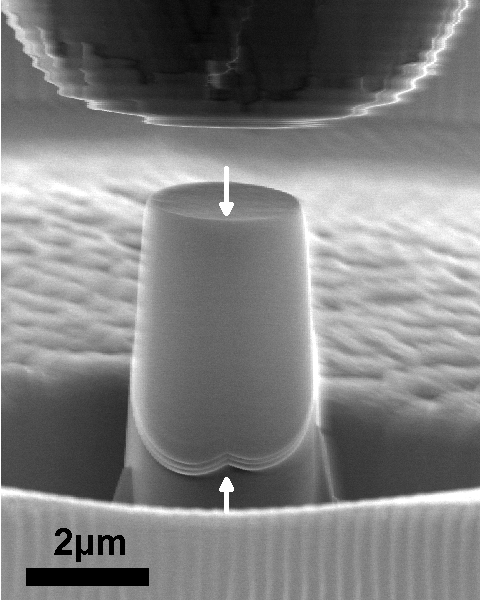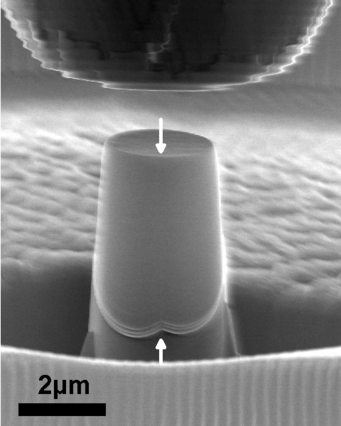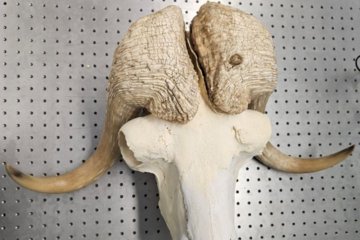
Dislocation-twin boundary interactions in FCC metals: Size scaling
The thorough, mechanism-based, quantitative understanding of dislocation-grain boundary interactions is a central aim of the Nano- and Micromechanics group of the MPIE [1-8]. For this purpose, we isolate a single defined grain boundary in micron-sized sample. Subsequently, we measure and compare the uniaxial compression properties with respect to single crystalline samples, using in situ micromechanical techniques. Two specific boundaries are targeted in this project:
- Coherent twin boundaries (CTB), ubiquitous in FCC metals, are of immense importance for simultaneous strength and ductility. In order to study their interaction with dislocations, focused ion beam (FIB) machining is employed to mill micron-sized bi-crystal pillars with a defined single Σ3(111) CTB in three different nominal sizes. Subsequently, in situ microcompression experiments are performed. The pre- and post- mortem imaging of the pillars is done using Scanning Electron Microscopy (SEM). In our previous work Malyar et al. showed that the shear stress of a single and bi-crystalline pillar (having one CTB located in the centre of the pillar) is marginally different (7 MPa) [1]. To explain the unexpectedly low difference, they proposed a “double-hump” dislocation shape, in which the difference in shear stress needed for bi-crystals is explained by the dislocation curvature near the CTB. The curvature is needed to form a perfect screw dislocation required for cross-slip like dislocation transmission through the CTB. The aim of this project was to study the size scaling in the dislocation-CTB interaction. The experimental data was then evaluated using a physical model based on the double hump shape of the dislocation, and is currently under review in Acta Materialia.
- Twin boundaries usually consist of long coherent and much shorter incoherent sections. This is due to lower energy required for formation of coherent twin boundary. However, presence of the incoherent twin boundary (ITB) in nanotwinned materials has been observed and its role in mechanical behaviour must also be understood. As such, we study the role of ITB on dislocation interaction with a similar methodology. Nevertheless, synthesizing the samples with straight horizontal ITBs is challenging, as their high interface energy motivates the deflection of the grain boundary plain. Thin film deposition has been employed to deposit appropriate films with suitable ITB sections.













